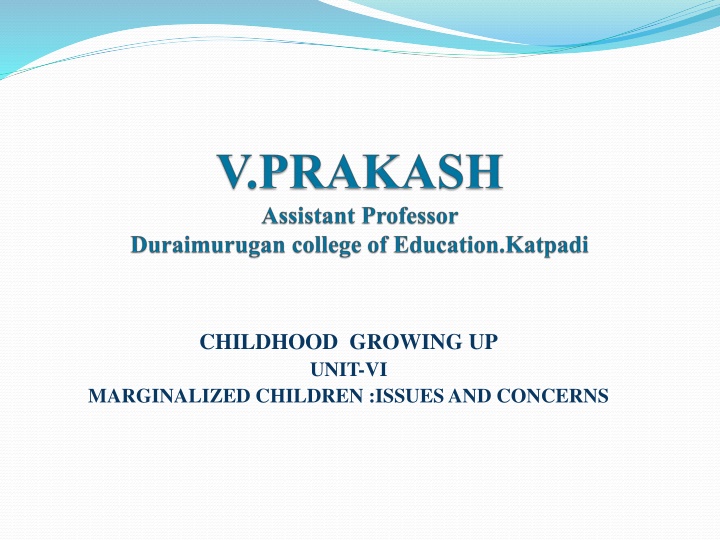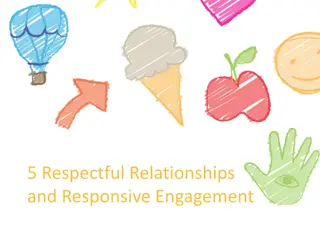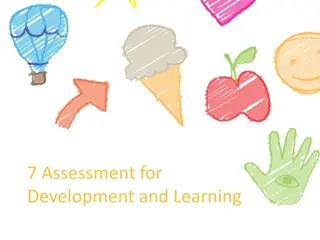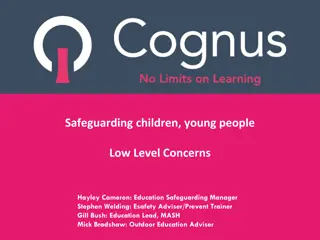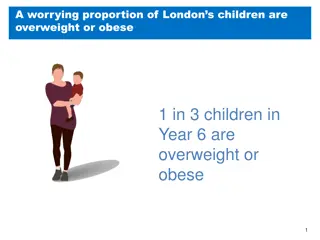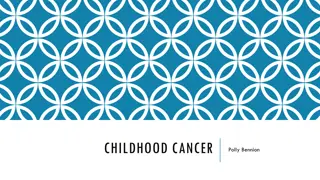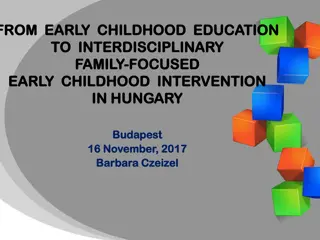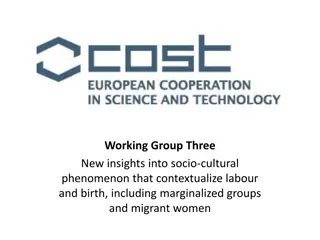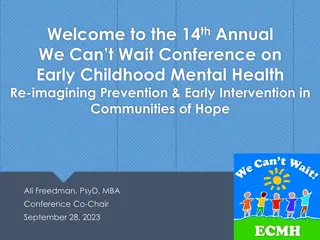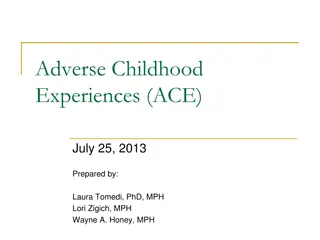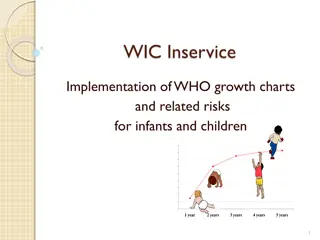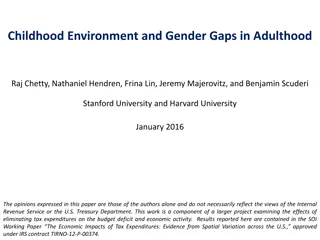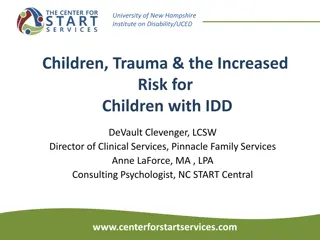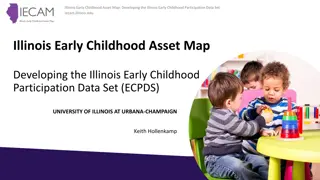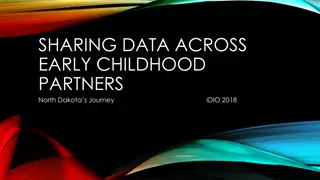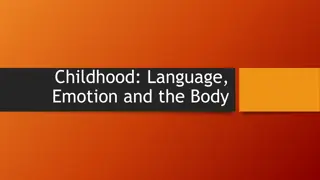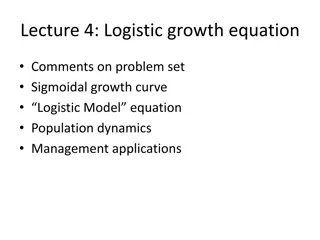Marginalized Children: Issues and Concerns in Childhood Growth
Marginalized children are those confined to the fringes of society, denied access to mainstream opportunities. This group includes those with disabilities, health issues, poverty-stricken, and those from marginalized groups. They face discrimination, stigmatization, and limited opportunities, impacting their social and educational experiences. Recognizing marginalized students in classrooms is crucial to providing support and opportunities for their holistic development, especially in urban and rural slum areas where basic needs are often unmet.
Download Presentation

Please find below an Image/Link to download the presentation.
The content on the website is provided AS IS for your information and personal use only. It may not be sold, licensed, or shared on other websites without obtaining consent from the author.If you encounter any issues during the download, it is possible that the publisher has removed the file from their server.
You are allowed to download the files provided on this website for personal or commercial use, subject to the condition that they are used lawfully. All files are the property of their respective owners.
The content on the website is provided AS IS for your information and personal use only. It may not be sold, licensed, or shared on other websites without obtaining consent from the author.
E N D
Presentation Transcript
CHILDHOOD GROWING UP UNIT-VI MARGINALIZED CHILDREN :ISSUES AND CONCERNS
Meaning Of Marginalized Children A marginalized children is a group of children that s confined to the lower or peripheral edge of the society. Such a group is denied involvement in mainstream economic, political, cultural and social activities
Who are marginalized children Individual Disability and special needs , HIV/orphans and other health-related problems Poverty related extreme & persistent poverty, child labour, street and working children Location - Urban slums, rural and remote areas Group based- indigenous , ethnic, racial,linguistic, caste minorities (religious,SC/ST)
Characteristics of Marginalized Children It suffers from discrimination and subordination May become stigmatized They share a sense of collective identity and common burdens They have a tendency to marry within the group Limited opportunity to make social contribution Dependency on others Receive negative public attitudes
How to recognize marginalized students in Classroom Learning difficulty High percentage of dropout Inappropriate types of behaviour Withdrawal Lack of opportunities for skill development Grade level repeaters
Children Living In Urban And Rural Slum Children who live in urban or rural zones often fine themselves in a precarious situation. Due to extreme poverty they can hardly satisfy fundamental needs such as nutrition, access of health care, education& employment Slum population means slum was originally used mainly in the phrase back slum meaning a back room and later back alley the origin of this word is thought to come from Irish Slum means a community of low economic class, homeless population
Children facing problem in urban slum The global problem of children in the urban world "must be the immediate priority. as far as India is concerned, the situation is getting worse day by day. In India Delhi, Mumbai, Kolkata which are the major hubs of slum Being out of school Early pregnancy Drug and alcohol abuse Negative peer influences Parental neglect Poverty & unemployment
Characterisrtics of slum population High rate of poverty Huge extent of urban decay Acute problem of malnutrition and health centre Unsanitary and unary environment Low standard of living or poor quality of live High rate of mental illness and suicide Low level of economic status of its residents
Operationalised through a Govt scheme of SLUM Rajiv awas yojana (RAY) Targeted and reached through the following development of action: Slum improvement Slum upgrading Slum redevelopment Slum resettlement
Deprived child A deprived child is a child under 18 years of age of who is not given proper parental care,control,education or other care and control necessary for the physical and emotional well being of the child . the term may also refer to a destitute , homeless or abandoned child
Deprived child means a child Who is for any reason destitute or abandoned Who does not have the proper parental care Who has been abused , neglected or is dependent Whose home is an unfit place for the child by reason of depravity on the part of the parent
Socially deprived girls dalit and tribal girls In India dalits-officially known as scheduled castes- constitute 1/6 of the population.they are consistently discriminated against despite a constitutional ban on untouchability and the enactment of specific legislation including the protection of civil rights act 1955 and the scheduled caste and tribes (prevention of atrocities act 1989)
Problem faced by the SC/ST Dalit women Children of dalitand tribal communities face a number of abuses. Ex: violence,sexual abuse Discrimination against ST,SC children can be seen in evidence of the education system Early marriage and pregnancy was widespread They have meager purchasing power and have poor housing condition Lack of malnutrition
Schemes for educational development of SC/ST Opening residential school Book bank scheme Remedial coaching scheme Hostels for girls and boys Pre and post metric scholarships SSA and RMSA Navodaya & Kendriya vidyalaya-15%&7.5% seats reserved for sc/st National institute of open schooling Primary health centre
Abused child Abused child refers to a child whose health or welfare is harmed or threatened by his/her parent ,guardian of the child or the person exercising custodial control or supervision of the child Child abuse can be single incident or number of different accident that take place over time
Child protection act 1999 Harm is defined as any determined effect of a significant nature on the childs wellbeing (sec 9 of the child protection act 1999) 2008 -children affected by substance abuse are considered as children in need of care and protection under the juvenile justice act 2000 India has launched an integrated child protection scheme which aim at shielding children from violence and abuse
Four different types of child abuse Physical abuse - Hitting , buning,biting,shaking (28.3% of adults report being physically abused ) Sexual abuse - Rape, incest, child prostitution (20.7% of adults report being sexually abused ) Emotional abuse- Rejection, yelling ,criticism (10.6% of adults report being emotionally abused ) Neglect abuse - Housing , healthcare , food, (below 3% of adults report being neglect abused )
Street children Street children is a term for children experiencing homelessness who are living on the streets of a city, town or villages. homeless youth are often called street kids and street youth ( 30% Disable children are street children) UNICEF defined 3types of street children Street living children Street working children Children from street families
WHO-Classifies street children according to 4 categories Children who live in the street Children who have left their families and resides in street Children living in protection centre's or orphanages who are at risk of becoming homeless Children who have week or insubstantial relations with their families
Characteristics of childhood of street children Problem of social adaption Feeling of social insecurity Delayed language development Lack of self confidence due to backwardness Problem in the development of moral values Delayed physical development due to poverty
Child labour Child means a persons who has not completed his 14 years of age any such person engaged for wages whether in case or kind is a child worker according to UNICEF all the children not being provided education at a school are considered as child labour Legal definition of a child - Article 45 of the constitution of India defines child as a person younger than 14 years - Mines act -1952 says that a child is a person not older than 16 years
Causes of child labour Bonded child Over population Illiteracy Poverty Urbanisation Orphans Unemployment of elders
Social measures of child labour The workmens compensation act-1923 The industrial dispute act- 1947 Child minimum wages act- 1948 The employment state insurance act -1948 The coalmine provision act-1952 The contract labour act -1970 Child and adolescent labour- 1986
Child growing up poverty A condition that puts a lot of children at risk for many of the issues listed in this section is poverty access to basic requirement such as food, shelter and clothing are the underlying cause of poor child health, child nutrition,child labour, child marriage and various other issues
Prime Causes of poverty Poor and unemployed parents Street children Lack of education Lack of social services Disability Discrimination Effcets- poor physical health,mental health problem,low sense of well being,underachieving at school, social deprivation
Removing and suggestion to poverty Adequate nutrition Clean drinking water Sanitation facilities Healthcare facilities Education Earning while learning Vocational training
WAY TO MEASURES OF POVERTY Planning commission 2004-05 estimated NSSO The Arjun sengupta report The saxenacommittee report The tendulkarcommittee report -2009
Measure to promote the status of marginalized Children Free and compulsory education to all Creating an inclusive school Providing special reservation quota Providing basic amenities like water, nutrition food,transport , sanitary facility Life enrichment programme Financial assistance for remedial coaching Establishment of residential schools
Teachers should develop a better relationship with community, NGO s and Govt Creating alternative school Use school complex at all level Vocational education and training for skill development Grand-in-aid to voluntary organisation Social development programmes for minorities
TNTEU-Model questions 1.Who are marginalized children? suggest measures to promote the status of marginalized children 2.Elaborate the different types of marginalized children and suggest measures to promote the status of marginalized children. 3.List the problem faced by the children living in slum areas and state your suggestion to rectify it. Thank you Thank you
